In my last post, From the horse’s mouth, we learned what a primary source is and what a rich collection the National Library of Australia has. Now I would like to discuss the secondary source and how to find what you want/need.
As a historian, I see secondary sources as the “stuff” I need to help me develop and prove my theories, find my space in the historical discussion and shape my argument. The secondary sources (aka the hard work and creativity of other researchers and writers) can also be a gateway to new primary sources as well.
A secondary source is a way for one to be introduced to, or learn more about, a particular subject, event, person/s et al. The UNSW Library defines the secondary source as “involv[ing] analysis, synthesis, interpretation, or evaluation of primary sources… [an] attempt to describe or explain primary sources”.
So what constitutes a secondary source? Non-fiction, fiction, music, art, literature, doctoral theses, magazines and periodicals (fancy name for journals)... ANYTHING! Let’s go exploring the NLA collection and I’ll show you how to use the catalogue to build yourself a good reading/research list.
Using the NLA catalogue to find lots and lots of secondary sources (and a really good read).
I was listening to A Podcast of One’s Own hosted by former PM Julia Gillard. Ms Gillard was interviewing the most magnificent writer, comedian and host of QI, Sandi Toksvig (podcasts: a useful secondary source. Did you know the NLA has its own podcast series with topics linked to the collection?). Sandi and Julia were talking about history and the absence of women in the historical record – right up this historian’s alley. Rosalind Miles’ book, Who Cooked the Last Supper? The Women’s History of the World was mentioned in the conversation and I wanted to know more. I went straight to the NLA catalogue!
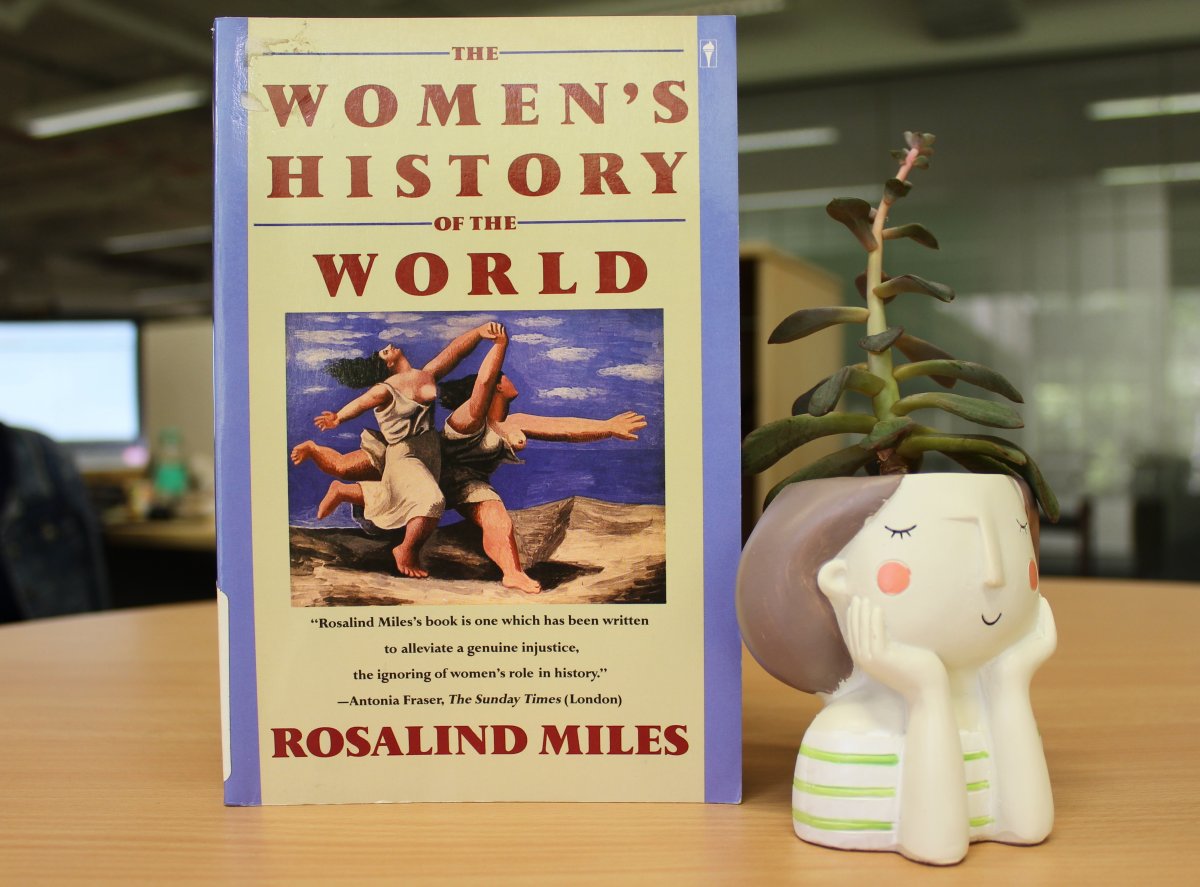
The Women's History of the World by Rosalind Miles https://nla.gov.au/nla.cat-vn2085473
Once I found the catalogue record for Miles' book, I used it to find other sources on the topic. Clicking on the categories listed under ‘Subjects’ takes you to similarly themed sources. To the right of the catalogue entry is a section called ‘Similar Items’, linking you to other books, journals etc related to that entry. In short, anything appearing as blue in the catalogue entry is a link. That includes the authors and editors, so don’t forget to click to see other of their published works held in the NLA.
By using one catalogue entry, you can, for example, create a thesis-distraction reading list (please don’t tell my supervisor).
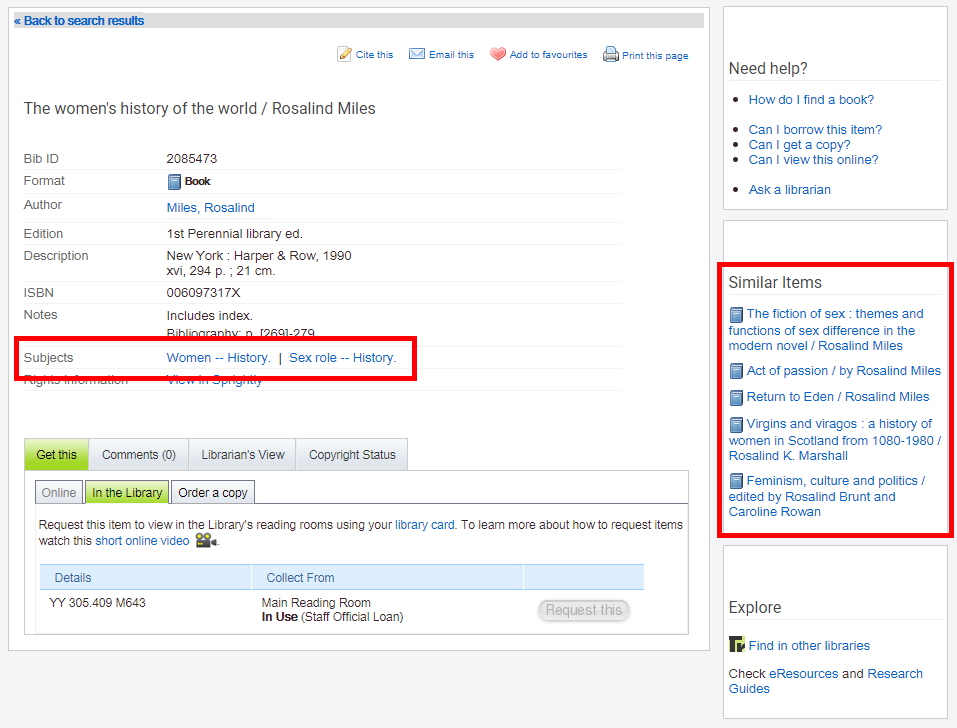
You can use the 'Subjects' links and the 'Similar Items' section to help find new resources.
When I commenced my PhD a loooong time ago, the first few weeks were spent trawling my university library catalogue to build a list of secondary sources (onsite and via other libraries) that would acquaint me with my topic; what I call, ‘Building a Bibliography’.
To build your own bibliography, you should begin your catalogue search very broadly. For example, I started with a broad subject search for ‘hospital reform France sixteenth century’ and limited the formats to books, journals and online publications. Using Advanced search, I was able to limit the search further to find materials only in English and French, and with a date published range.
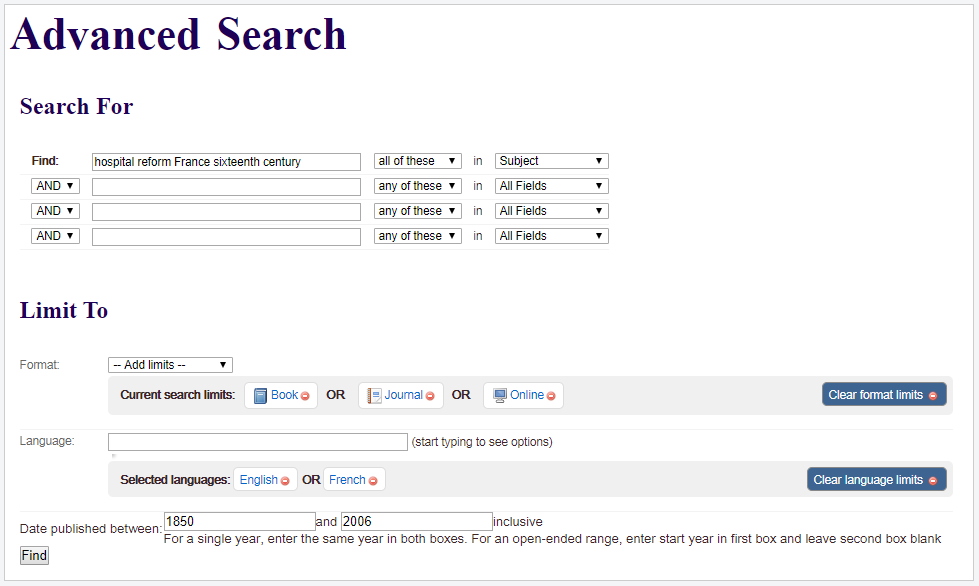
Yes, the results list was big, but when you are new to a topic, start big and narrow things down as you progress. You become familiar with the way different libraries and archives catalogue items, particularly in regard to subject keywords, and you also start to learn who are the experts on your topic. This big getting started search soon narrows and becomes more focussed as your research/interest develops.
Another way to assist narrowing your search is to use the ‘Full contents’ list, usually found for the catalogue entries of edited collections. The full contents may include chapter titles and authors. This is a great way of assessing the usefulness of a source and can also introduce new authors, keywords and concepts relating to your topic.
In a shameless plug, I utilise my own contributions to edited collections held by the NLA as example. I like to go through the contents list of secondary sources like these and highlight authors, keywords in the titles and subjects on theme with my research, which I can then use in future searches.
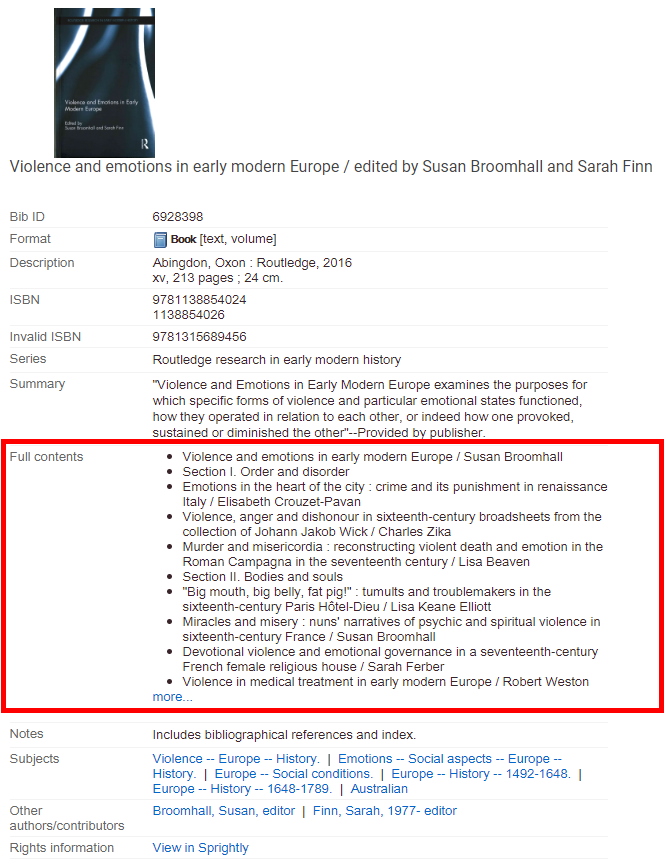
A Full Contents' list in a catalogue record (including a chapter by a familiar author) https://nla.gov.au/nla.cat-vn6928398
Once you master how to search the NLA catalogue, indeed any library catalogue, as you greedily mine for your secondary sources, you can apply this to advance and focus your search. And, of course, once you start delving into your secondary sources, more sources are to be found in the references and bibliographies (I do love footnotes!).
The 'Stories' section of the NLA website has a large selection of blogs, library news stories, Unbound Magazine as well as the previously-mentioned podcasts, all of which can be mined for secondary sources. The Learning Program webinar series will aid development of your search skills with guides on Trove, family history, World War I, maps and how to become a “scholarly researcher”.
For those who live in Canberra, don’t forget the benefit of popping into the NLA to look at the latest exhibitions – full of source materials! Plus author events, lectures, conferences and writers festivals – keep an eye on What’s On. Non-Canberrans, you are not forgotten. Many library events are filmed or podcasted, so check ‘Stories’ and the NLA’s YouTube Channel. Oh the treats you will find there (including more webinars)!
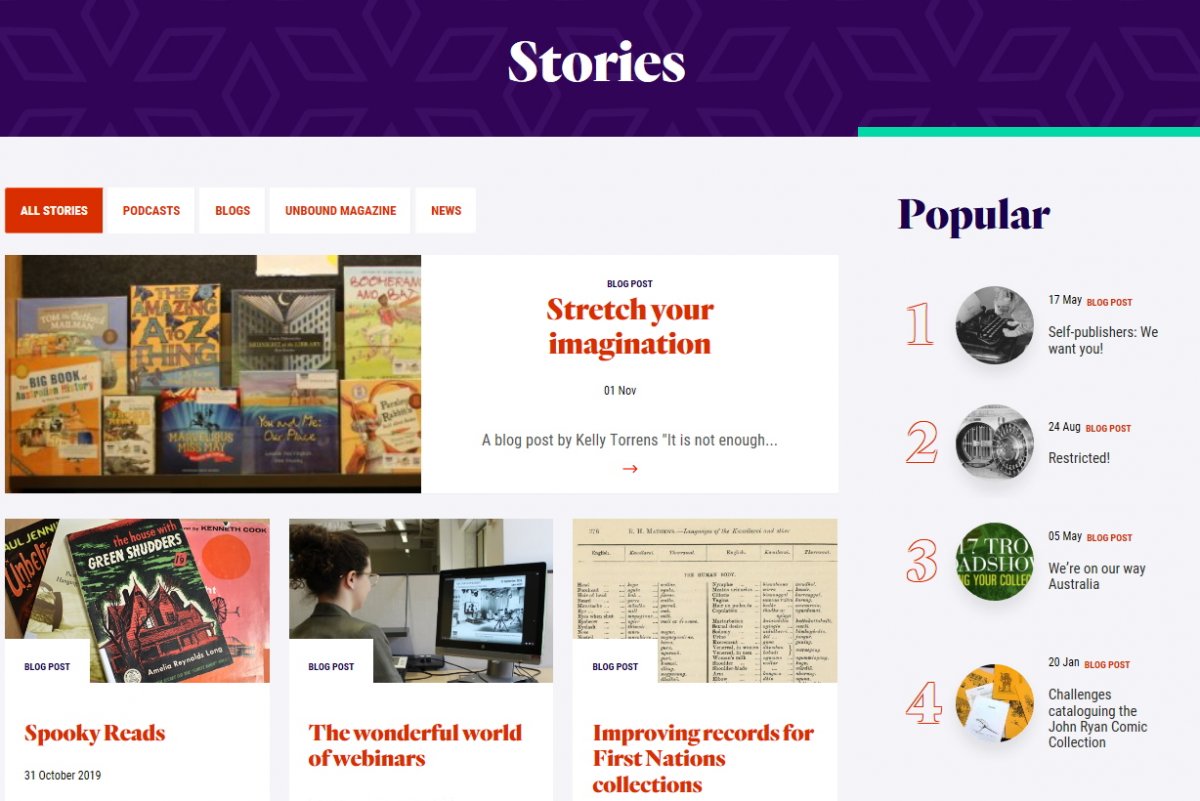
Hopefully this post has given you some ideas about getting started on your secondary sources search at the National Library of Australia. And don’t forget that the NLA is full of librarians who can help you on your way, onsite and online via ‘Ask a Librarian’. Wishing you all great success and productivity!